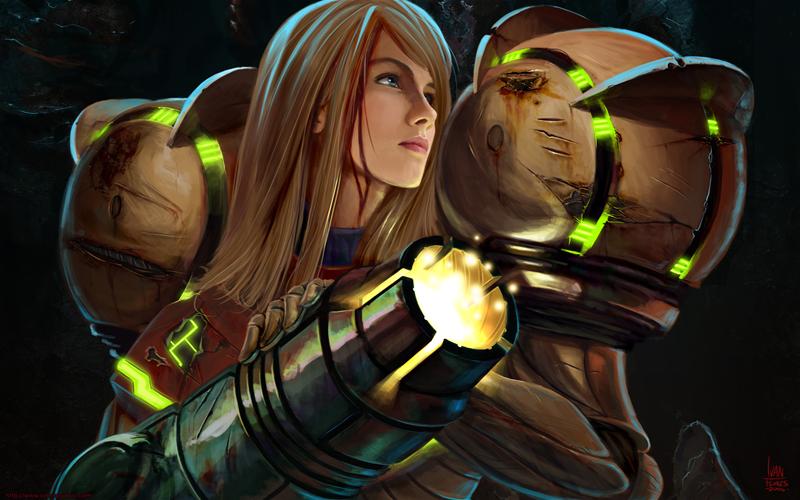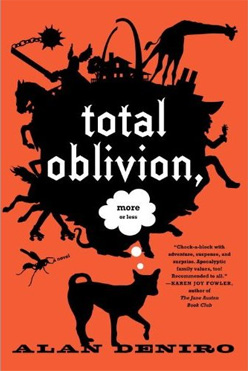Metroid: The Other M; or, the Girl with a Cannon for a Hand

When I look at various forms of criticism and reviewing-literary, music, etc.-and consider how moribund they can be at times, I take solace in the fact that it will never reach the nadir that gaming journalism seems to dwell in. As a whole. I am talking about the various organs that are there to ceaselessly promote product, to ensure that the surprises elicited in a game are unarticulated, to enthrall themselves-and presumably the audience-with cheap kills and thrills. Truly moribund. Though there are always exceptions.
Thereâs a new Metroid game out, called Metroid: The Other M. I havenât played it. I have played the first two of the Metroid Prime games (though not finishing them) and I must have Metroid on my mind because I am playing Super Metroid on the Virtual Console now. Other M has received mixed-to-good reviews, and part of the complaint has been about the increase of cut-scenes and narrative.
“Ham-fisted controls and storytelling turn Samus into a clumsy blabbermouth…”
I came across this user review on Metacritic with someone with the handle of “Hynda”, and it was truly the most fierce and moving piece of writing on games I had ever read-it was so powerful, in fact, that it made me rethink why I enjoy certain games and not others. Here we go:
There is a lot of sexism around this game [and its bad reviews -ed.], people who says its the worst metroid ever are probably machist. They love games like metroid prime where you barely see samus body or face, you can only get to see her eyes so you feel related to her, she doesnt even talk, she got no personality, no soul, no life, she is just a puppet for the players, in this game Samus comes to life, and she is not a silent mad bounty hunter who wants to kill gods or anything, she is not like that crappy master chief or kratos, not even like that copy of Indiana jones called Nathan Drake. She is more than that, she is a human, like you and me, and like a human she got her weaknesses, she can die, cry, worry and respect others, she is sad all over the time and she covers her face with a visor because that way she can hide her sorrow, this is a story about a girl who wants to teach the universe you can be a good person and still be great, unlike those PS3 games where everyone is evil, bald or with giant muscles, samus is like the girlfriend everyone have had, but I know most of gamers dont even have a girlfriend that is why they cant understand that, they cant feel related, they only feel related to games with old bags smoking with a patch in their eyes(MGS4). Really dudes, you should try to get a girlfriend, maybe then you will understand this game greatness
The reviews depicting Other M as being egregiously hammy are pretty universal-and that might indeed be the case (I do want to pick up the game and give it a thorough go). And the some of the design decisions do seem misguided (e.g., in most Metroid games, Samus loses her awesome equipment by accident, which she has to retrieve over the course of the game. In Other M, she isnât “authorized” to use certain pieces of equipment by her commanding officer until certain points of the game). The point is-or rather Hyndaâs point is, because she said it better than I possibly could-is that, when we control a character, itâs not a simple matter of narrative linearity. Itâs complicated. The identification of a character when playing him or her is complicated. We are complicit with whom we play. Nintendo is known for characters as empty urns-we donât go to Mario for the vicissitudes of life as a plumber.
Clearly the preferred archetype for Samus is that of the strong, silent female warrior of the Metroid Prime Trilogy, and I have enjoyed those games (not as much as I have enjoyed Super Metroid, though). But to fill that urn-the very act of filling it-can create its own sort of power. The how and the execution of this can be either effective or ineffective, of course, but it seems that a lot of reviewers (and players) donât want anything to do with this attempt at characterization. They just want Samus to shut up. And stop emoting.
Itâs men, young men, who drive this industry. And on the screen the caricaturing of musculature, both male and female, is done for these young men in mind. The aforementioned puppets.
But in a game, the player has the choice to create control in a different way-to identify with a woman on the screen “who is like you and me.” And that feeling-feelings that many games try to viciously uproot with cheap spectacle-is a precious treasure indeed.
More later, when I play this.





and she is not a silent mad bounty hunter who wants to kill gods or anything, she is not like that crappy master chief or kratos… this is a story about a girl who wants to teach the universe you can be a good person and still be great, unlike those PS3 games where everyone is evil, bald or with giant muscles…
I confess, my middlebrow American geek taste in games puts me square in the middle of the Xbox market, but stuff like this makes me think I should get a Wii.
Interesting. The primary reason I was aware of this game at all was because of the responses generated by this review:
http://g4tv.com/games/wii/61992/metroid-other-m/review/
There a womanâs negative review of the game prompted a huge number of insults from young men.
Perhaps Hynda saw what the game designers were trying to do in a way that G4TVâs reviewer did not, but reading Hyndaâs other reviews on Metacritic does not inspire a lot of confidence in me.
I actually quite like her other reviews-strident, yes, many times-but replete with many good insights. Yeah, the feminist/sexist content of this game is rather…gray, hard to discern as being wholly supported by one side or the other. I can see both sides.
Also the mob mentality of many male gaming fans is…its own force, more interested in being contrarian and ill-equipped to reason through things than anything else.